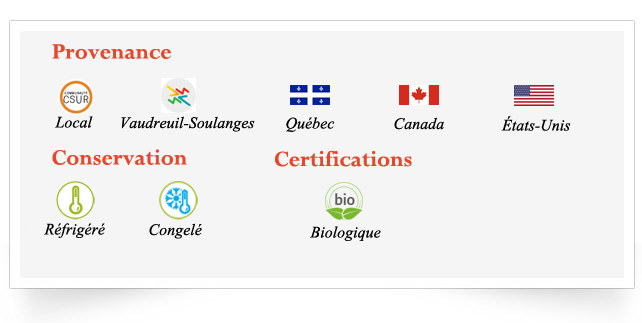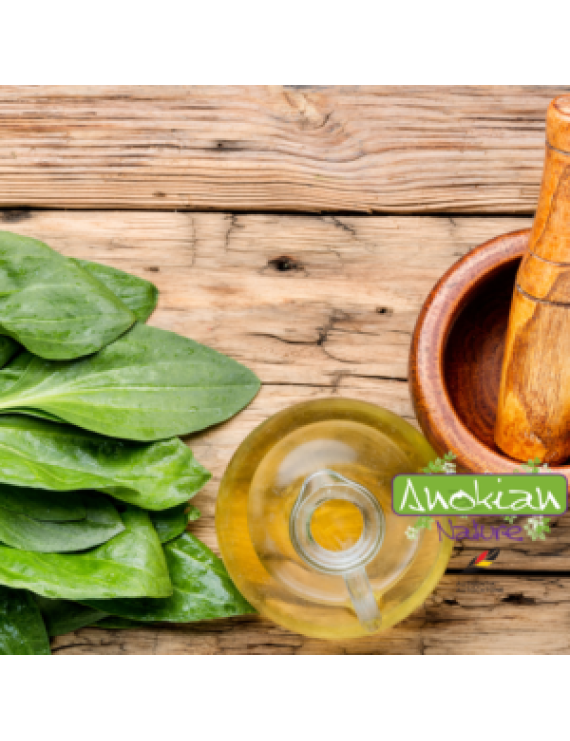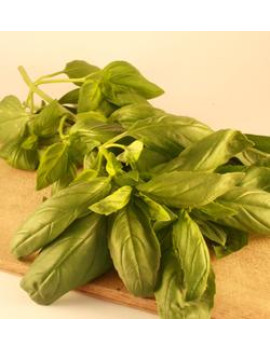Semences Grand plantain (Anokian)
Distance parcourue : 500 Km en moyenne
-
3.99 $ + taxes
Description
Sans OGM
Résistant au froid
Semence non traitée
Sans pesticide
Tout Plant comestible
Pollinisation libre
Enveloppe compostable
Un peu d’Histoire:
Plantago est un genre comprenant plus de 200 espèces végétales largement utilisées dans le monde entier comme aliments fonctionnels et remèdes pour un large éventail de maladies. Cette revue résume les utilisations traditionnelles, les composés bioactifs et les activités pharmacologiques de ce genre
Le plantain sauvage est connu des Russes et leur nom indigène est Podoroshnik, ce qui signifie près de la route ou le long de la route, cette plante ne vient pas du Canada.
Chez les Premières nations d’ici, on l’appelle pied blanc, car il pousse partout où les nations blanches ont mis leurs pieds et ou ils ont marchés.
Il pousse à l’état sauvage et nous l’utilisons pour ses propriétés médicinales.
Valeur nutritive et médicinale:
Elle contient des , éléments minéraux comme le sodium, du potassium, magnesium, fer, manganese et du phosphore, des acides gras, vitamines (vitamine C et carotènes),
nitrate et acide oxalique ont été déterminés.
Ses propriétés médicinales: On utilise les feuilles et les graines,
Les niveaux densément concentrés de composants chimiques du plantain à feuilles larges en font l’une des cultures médicinales les plus prolifiques et les plus largement distribuées au monde.
Les constituants chimiques actifs sont l’aucubine, l’allantoïne et le mucilage. Ces composés contiennent de nombreuses propriétés antimicrobiennes, antivirales, antitoxines, astringentes, cicatrisantes, rafraîchissantes et diurétiques. Les feuilles sont généralement traitées et préparées sous forme de pommade ou de cataplasme..
Le plantain à feuilles larges peut être utilisé pour de nombreuses préparations différentes, autant alimentaire que corporel.
Les jeunes feuilles peuvent être ajoutées aux salades ou cuites comme des légumes verts comme les épinards et le chou frisé.
Les feuilles deviennent filandreuses et fortement parfumées à mesure qu’elles vieillissent, en particulier lorsqu’elles poussent dans des climats chauds et secs. Ainsi, avec l’âge, les feuilles de plantain à feuilles larges se prêtent bien en décoction ou pour boire en tisane.
Truc de culture:
Je vous recommande fortement de mettre de la terre dans un pot ou un contenant vers le début mars et ajouter du sable mélanger avec vos semences et soupoudrer sur le dessus de la terre.
Mettre votre contenants dans un endroit pour qu’il reste a l’extérieur le taux de germination sera plus élevé.
sinon vous pouvez débuter a l’intérieur mais le taux de germination sera un peu plus faible.
Pour terminer c’est une variétés qui est difficile à nettoyer car c’est une semences
poussières, mais ne vous inquiétez pas je vais en mettre beaucoup plus dans votre enveloppe que moins;)
Nos semences sont vigoureuses, à pollinisation libre et adaptées au climat québécois
Espèce:Plantago major: Plantaginacées
Semis: Début mars a l’intérieur, début avril sous abris extérieur ou semer à la volée ou en ligne sur la surface a cultiver à l’extérieur sois
au printemps avant les derniers gels au sol de votre région ou vers la fin du mois de septembre
Semences: 10-15 semences par pot, repiquage final dans un pot extérieur ou sur le dessus de la terre vers milieu mai
Profondeur de semis : 0.5 cm
Temps de germination: 5-15 j jours
Sol: Pauvre, humifère, meuble et drainé
Endroit : Soleil et tolère très bien l’ombre et le froid
Espacement entre les plants : 25-30 cm
Hauteur à maturité:10-50cm
Maturité : 75-85 jours| Vivace
Semence par enveloppe: +/- 175
Provenance : Mercier, QC, CANADA - 55 Km.
Sans OGM
Résistant au froid
Semence non traitée
Sans pesticide
Tout Plant comestible
Pollinisation libre
Enveloppe compostable
Un peu d’Histoire:
Plantago est un genre comprenant plus de 200 espèces végétales largement utilisées dans le monde entier comme aliments fonctionnels et remèdes pour un large éventail de maladies. Cette revue résume les utilisations traditionnelles, les composés bioactifs et les activités pharmacologiques de ce genre
Le plantain sauvage est connu des Russes et leur nom indigène est Podoroshnik, ce qui signifie près de la route ou le long de la route, cette plante ne vient pas du Canada.
Chez les Premières nations d’ici, on l’appelle pied blanc, car il pousse partout où les nations blanches ont mis leurs pieds et ou ils ont marchés.
Il pousse à l’état sauvage et nous l’utilisons pour ses propriétés médicinales.
Valeur nutritive et médicinale:
Elle contient des , éléments minéraux comme le sodium, du potassium, magnesium, fer, manganese et du phosphore, des acides gras, vitamines (vitamine C et carotènes),
nitrate et acide oxalique ont été déterminés.
Ses propriétés médicinales: On utilise les feuilles et les graines,
Les niveaux densément concentrés de composants chimiques du plantain à feuilles larges en font l’une des cultures médicinales les plus prolifiques et les plus largement distribuées au monde.
Les constituants chimiques actifs sont l’aucubine, l’allantoïne et le mucilage. Ces composés contiennent de nombreuses propriétés antimicrobiennes, antivirales, antitoxines, astringentes, cicatrisantes, rafraîchissantes et diurétiques. Les feuilles sont généralement traitées et préparées sous forme de pommade ou de cataplasme..
Le plantain à feuilles larges peut être utilisé pour de nombreuses préparations différentes, autant alimentaire que corporel.
Les jeunes feuilles peuvent être ajoutées aux salades ou cuites comme des légumes verts comme les épinards et le chou frisé.
Les feuilles deviennent filandreuses et fortement parfumées à mesure qu’elles vieillissent, en particulier lorsqu’elles poussent dans des climats chauds et secs. Ainsi, avec l’âge, les feuilles de plantain à feuilles larges se prêtent bien en décoction ou pour boire en tisane.
Truc de culture:
Je vous recommande fortement de mettre de la terre dans un pot ou un contenant vers le début mars et ajouter du sable mélanger avec vos semences et soupoudrer sur le dessus de la terre.
Mettre votre contenants dans un endroit pour qu’il reste a l’extérieur le taux de germination sera plus élevé.
sinon vous pouvez débuter a l’intérieur mais le taux de germination sera un peu plus faible.
Pour terminer c’est une variétés qui est difficile à nettoyer car c’est une semences
poussières, mais ne vous inquiétez pas je vais en mettre beaucoup plus dans votre enveloppe que moins;)
Nos semences sont vigoureuses, à pollinisation libre et adaptées au climat québécois
Espèce:Plantago major: Plantaginacées
Semis: Début mars a l’intérieur, début avril sous abris extérieur ou semer à la volée ou en ligne sur la surface a cultiver à l’extérieur sois
au printemps avant les derniers gels au sol de votre région ou vers la fin du mois de septembre
Semences: 10-15 semences par pot, repiquage final dans un pot extérieur ou sur le dessus de la terre vers milieu mai
Profondeur de semis : 0.5 cm
Temps de germination: 5-15 j jours
Sol: Pauvre, humifère, meuble et drainé
Endroit : Soleil et tolère très bien l’ombre et le froid
Espacement entre les plants : 25-30 cm
Hauteur à maturité:10-50cm
Maturité : 75-85 jours| Vivace
Semence par enveloppe: +/- 175
Provenance : Mercier, QC, CANADA - 55 Km.

Mots clés: semence


